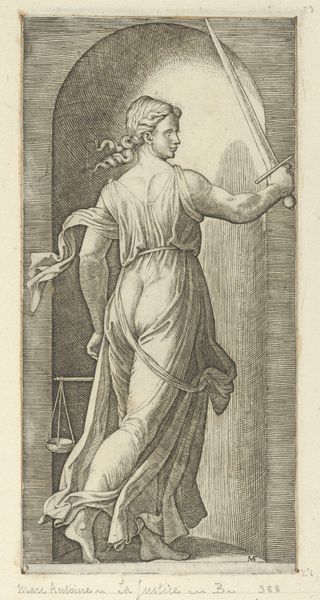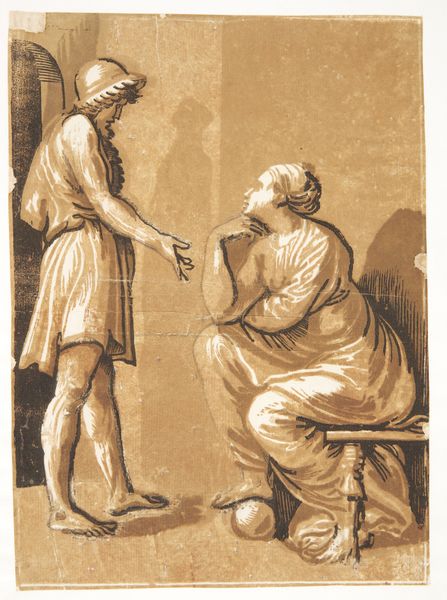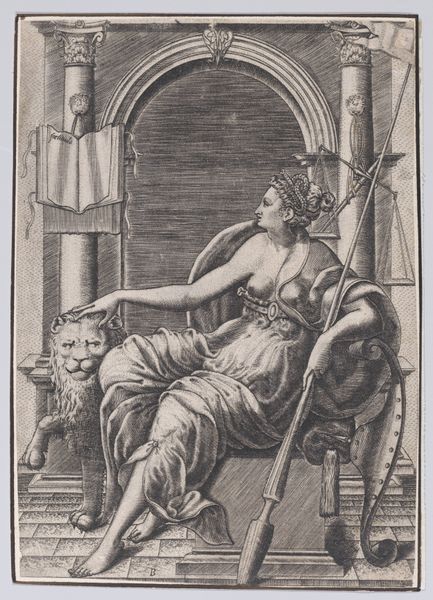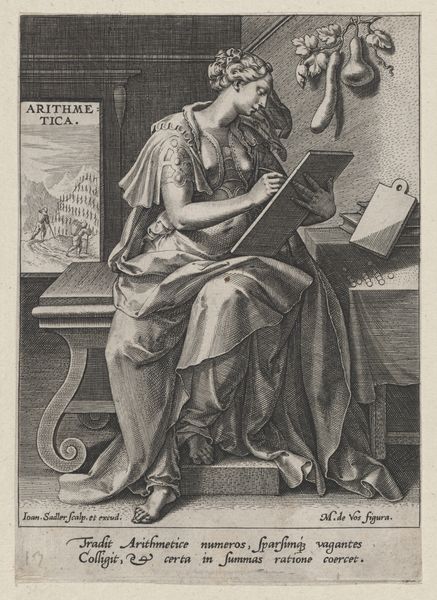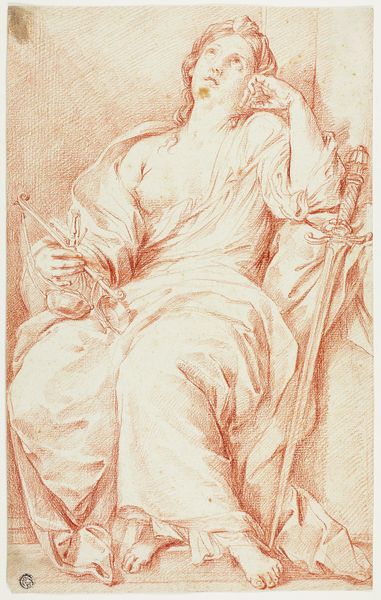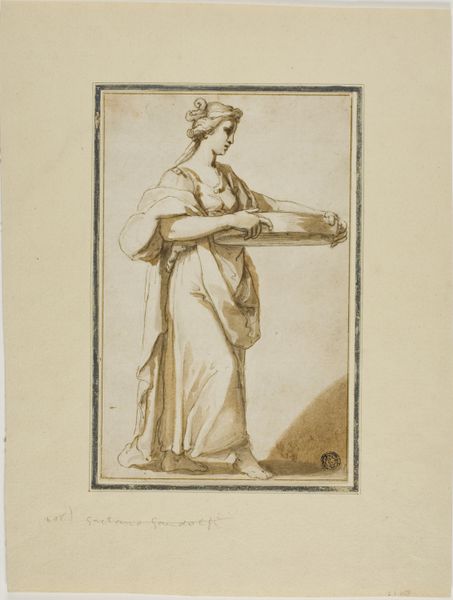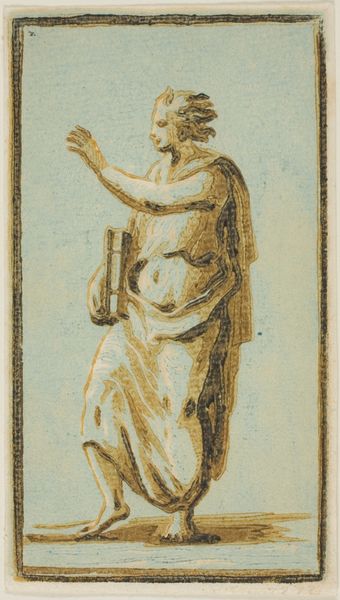
Dimensions: 315 mm (height) x 245 mm (width) (Plademål)
Curator: This etching, titled "Kystparti ved Ærøskøbing" by Peter Tom-Petersen, was created in 1923 and is currently housed at the Statens Museum for Kunst. What's your initial reaction? Editor: It feels neoclassical, almost sculptural. The figure, rendered in these striking tonal contrasts, has a kind of statuesque quality. I'm immediately drawn to the way light defines the drapery, the weightiness of the folds... Curator: The artist's approach is intriguing, especially given the broader socio-political climate of post-war Denmark. One wonders if the classical allusion represents a yearning for stability. There’s this invocation of idealized historical representation, set against the realities of early 20th-century anxieties. Editor: I agree it invites consideration beyond just aesthetic appreciation. It's tempting to unpack what exactly the figure represents here: an allegorical image with intellectual pursuits at hand. I see some sort of empty canvas at the right and at the upper section some empty background for more content, suggesting the figure it waiting for something or thinking how to fill it. Curator: And the composition directs us to the figure’s thoughtful gaze, doesn't it? As if she contemplates filling the board. How might this work engage with contemporary societal perceptions of knowledge, power and feminine allegorical image ? Is there tension between representing universal concepts and marking the specific position and condition of the feminine? Editor: It's definitely creating conversation through shape, contrast, and a static atmosphere. Also the work is an eclecticism with history-painting and portrait-drawing, is it a portrait in baroque style? There's something in the artist’s technical rendering - which lends the etching its undeniable visual pull. I am now keen to analyze it! Curator: Right, but art isn't produced or viewed in a vacuum. We need to reflect upon it as both artefact and mirror reflecting not only forms and content, but beliefs and social forces. A question could be what the status of history painting might be in the 1920's and if such reference points help construct identity or critique present views. Editor: Absolutely. What appears aesthetically contained within its edges certainly spills over in conversations regarding production, identity, and perception. The lines have triggered us to make our own personal views about it!
Comments
No comments
Be the first to comment and join the conversation on the ultimate creative platform.

